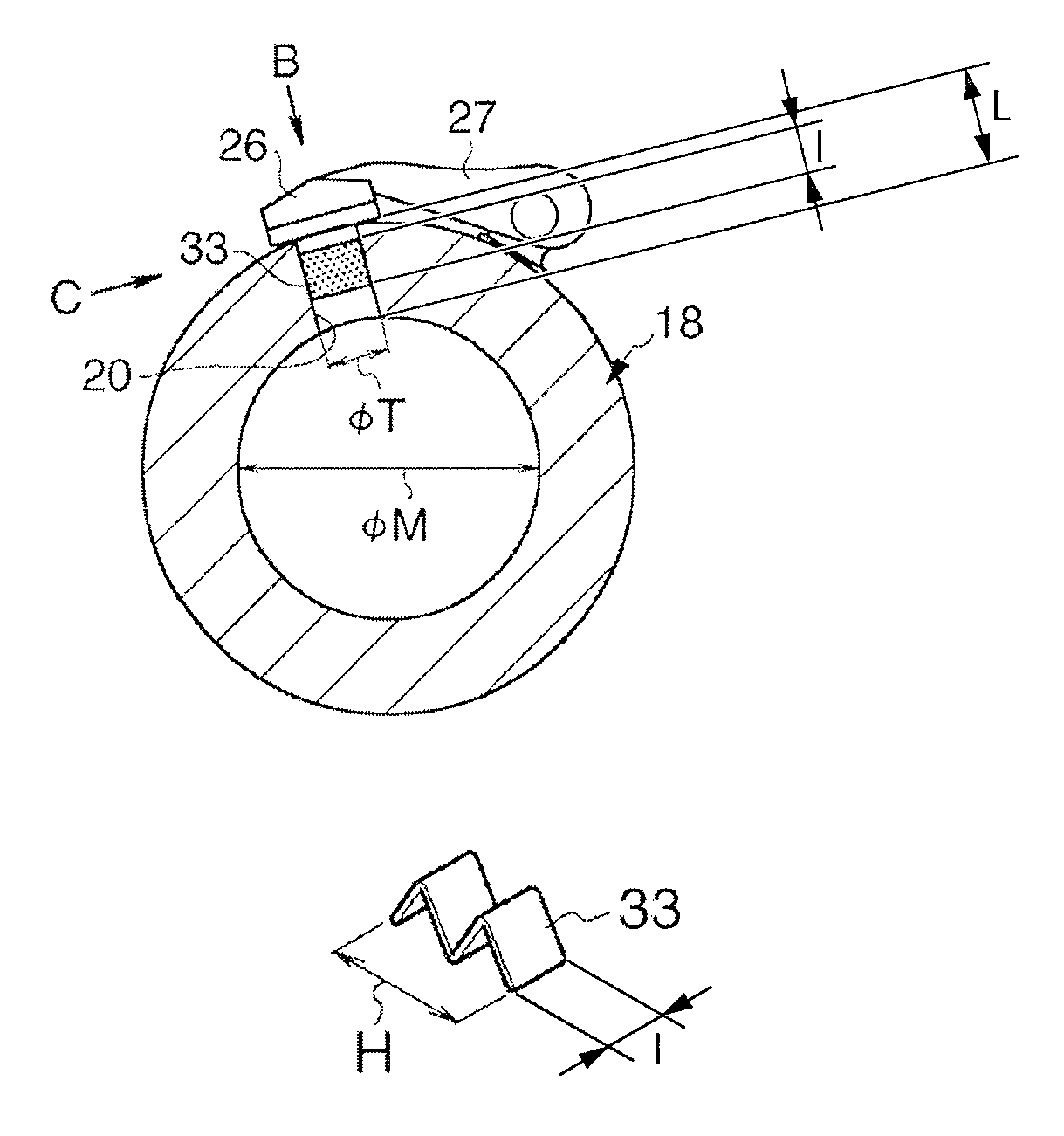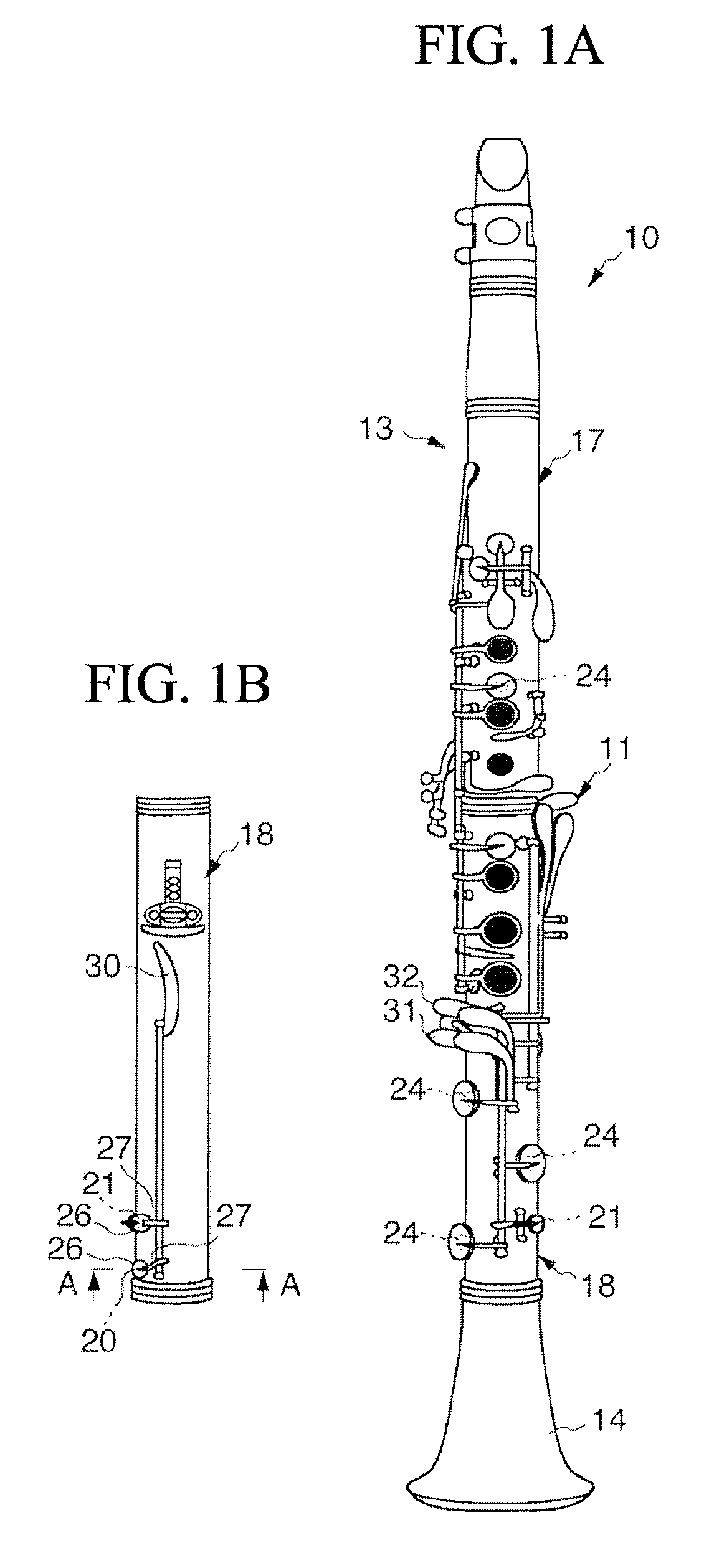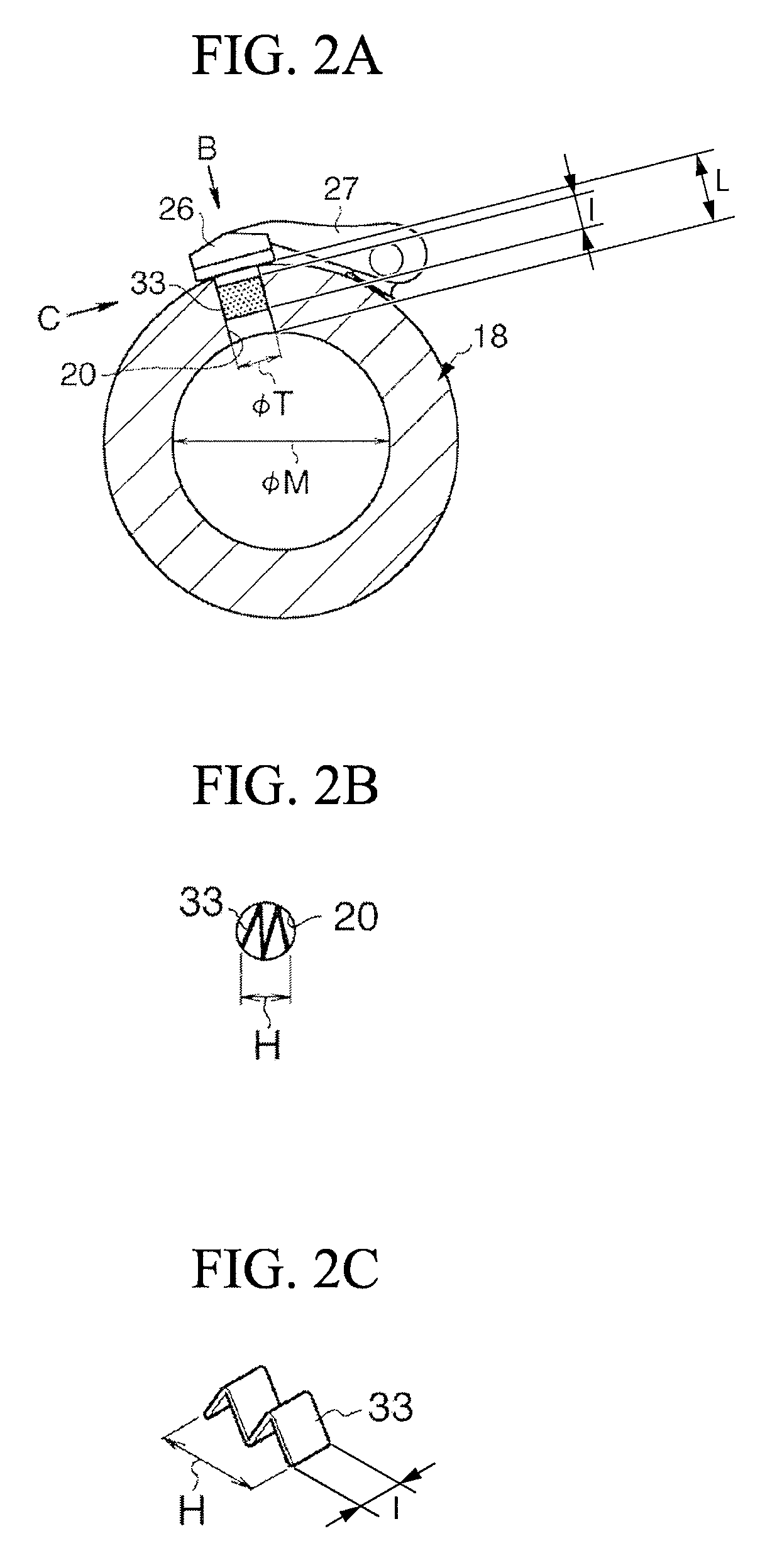Woodwind instrument and airflow adjuster
a technology of airflow and woodwind instruments, applied in the field of woodwind instruments and airflow adjusters, can solve the problems of increased fingering distance, increased difficulty in performance, and increased difficulty in fingering distance, so as to reduce the number of components, reduce the number of unfavorable sounds, and reduce the hole diameter
- Summary
- Abstract
- Description
- Claims
- Application Information
AI Technical Summary
Benefits of technology
Problems solved by technology
Method used
Image
Examples
Embodiment Construction
[0030]Hereinafter, exemplary embodiments of the invention will be described with reference to the accompanying drawings.
[0031]In the following description, as long as not otherwise specified, the terms, “up” and “down”, mean upward and downward in paper surface of FIG. 1A. That is, a mouthpiece of a woodwind instrument is located at an upper position and a bell part is located at a lower position.
[0032]Referring to FIGS. 1A and 1B, a woodwind instrument 10 is a Boehm B-flat clarinet in this embodiment. The woodwind instrument 10 includes a main tube 13 which is a tube having keys 11 arranged on the outer circumferential surface thereof and a bell part 14 which is connected to a lower tube of the main tube 13. The main tube 13 includes an upper tube 17 and a lower tube 18 coupled to each other. A plurality of tone holes 20, 21, and 24 are formed in the upper tube 17 and the lower tube 18. Keys 11 and 26 are disposed in a plurality of tone holes so as to open and close the tone holes....
PUM
 Login to View More
Login to View More Abstract
Description
Claims
Application Information
 Login to View More
Login to View More - R&D
- Intellectual Property
- Life Sciences
- Materials
- Tech Scout
- Unparalleled Data Quality
- Higher Quality Content
- 60% Fewer Hallucinations
Browse by: Latest US Patents, China's latest patents, Technical Efficacy Thesaurus, Application Domain, Technology Topic, Popular Technical Reports.
© 2025 PatSnap. All rights reserved.Legal|Privacy policy|Modern Slavery Act Transparency Statement|Sitemap|About US| Contact US: help@patsnap.com



